art ed
now browsing by tag
Creating Connections in the Virtual Art Classroom
Blog Entry By Leslie C. Sotomayor
Art empowers us to interconnect through diversified ways of thinking and creating meaning for our humanity and communities. Art facilitates creative ways for engagement and navigating difficult issues, emotions, and well being. How can we reimagine the arts towards social change in different ways through art education and virtual worlds? As I reflect in the midst of so much chaos in the U.S. with a pandemic and an increase of social unrest, I believe we are in an opportune time as artists and educators to create meaningful change and disrupt the traditional troupes of what art education is and can be.
As I taught for the sixth summer with the Upward Bound Program it was a very different experience via a virtual realm with no physical studio space. I had to develop ways to create a meaningful curriculum for students in the arts that was interdisciplinary and accessible. All of the students were afforded an art box with basic art materials and a laptop with a camera for virtual meetings. I decided to center my curriculum on the work of Puerto Rican artist Soraida Martinez http://www.soraida.com and the theorizing she coined titled verdadism. Verdad is the Spanish word for truth and ism is the suffix that means the theorizing of an idea or concept. Martinez’s theorizing and work stems from a place of grappling with her own identity and history as a woman of color who did not fit into any one category neatly and grew tired of underrepresented artwork in the United States being diminished and undervalued within the art world. She chose to challenge and resist traditional norms in the art world by creating her own genre of work. Martinez confronted the racist and sexist social issues and microaggressions she experienced and witnessed as she paints abstract images and activates a new language for herself through verdadism. Martinez paints and juxtaposes her paintings with a title and text that is showcased together to contextualize the art pieces and position her art into the world in the way in which she deems necessary addressing social and everyday issues as a Puerto Rican woman. Martinez developed this style to stand in her truth and theorize about her art in ways that are meaningful to her, from the inside out.
As I introduced Upward Bound high school students to the work of Soraida Martinez I layered the idea of art and language with improvisations for curious art-making. What I mean by this is a simple yet often overlooked component of being intentional about meeting each student where they are in their creative process and allow for that point to serve as a place for engagement and creative processes. For example, one student created a symbol around a concept for an initiative that was sparked by the Star Wars movie series. He created meaning with his symbology in the design and color palette theorizing about who would use the symbol and why in his imagined team for social justice (see image 1). I share here various examples of student’s artwork in a variety of ways all done via virtual teaching, discussions, and documentation of creative processes (see images 2 and 3 below). What I have learned throughout this process is that meaningful connections through virtual spaces are more than possible and offer new ways of thinking and implementing new forms of knowledge production in art education.
High School student created a motif symbol of a team initiative as a new branch of Star Wars with a storyline (theorizing) about the history and initiative creating a team defending social justice.
Another student combined her interest in digital photography and poetry by writing a series of three poems, translated into Spanish, and taking photos in her house of staged scenes and editing the photographs on her laptop.
Another Student created a graphic novel in English and together we translated the graphic novel into Spanish for bilingual readers. See more here: https://twitter.com/hashtag/TransformacionesClubdeGatos?src=hashtag_click
Leslie Sotomayor received a Dual PhD in Art Education and Women’s Studies in 2020. She is an Assistant Professor in Art Education at Edinboro University of Pennsylvania.
I’ve been teaching for a while now . . .what’s next?
I’ve been teaching for a while now . . .what’s next?
Discovering what opportunities exist for Art Educators when considering Master’s Programs.
So you have been teaching for a while now and you are considering what is next? For many of us, teaching is a way of life, and seeking ways to better our practice is simply intuitive. But deciding the best way to acquire that learning and what those extra steps will do in the long run can be difficult to answer. My name is Ben Hoffman and I am the Visual Arts Teacher at Kutztown Area High School. Since graduating from Kutztown University in 2015, my journey has taken me to Philadelphia, Baltimore, and back. I have been incredibly fortunate to teach and work in museum settings, galleries, community arts centers, summer arts programs, and public-school settings. In addition to my range of experiences in teaching, I currently serve as the PAEA Region10 Representative as well as chairman of the Kutztown University Arts Society.
As an Art Educator, you are equipped with far many more talents and experiences than what our certification deems. Teaching K-12 is merely one of the many rewarding opportunities that we have available. This past year, I successfully completed my fourth year at Kutztown Area High School as well as graduated with my Master’s in Art Education from Kutztown University. For many of us, working towards our Master’s in Education is often most appropriate and considered an acceptable pathway when pursuing our Level II Certification. Unlike my undergrad experience, the courses in my Master’s program were directly driven to my pedagogy and helped enrich the quality of my program. Much of any undergraduate program is directed towards the understanding of pedagogy and curriculum while my time as a graduate student applied that theory to practice. From rewriting curriculum, developing new courses, embodying a new mindset for teaching, and advocating for our growing program, my experience as a graduate student was unbelievable.
Regardless of the path that you may take, it goes without saying that it will take time and energy. I was highly motivated to learn just as much as I wanted to move up on the pay scale. But just recently, I stood at the crossroads of no school and yearning that desire to continue to grow. This is when I then contemplated other master’s programs and even my doctorate. Now that I have my Master’s In Art Education, what more can I do?
Connecting with people and establishing those relationships is the foundational piece to making any impact. Now having my Masters in Art Education, I am considered qualified to teach in non-traditional settings, serve as a nonprofit program director or even an instructional designer. Each of these professions seemed equally interesting, but I still wanted to know what more was available. This is when I stumbled upon a Master of Arts in Arts Administration. Unlike the education world, Arts Administration extends opportunities to individuals who are equally as dedicated, talented, and passionate as the artists and audiences they support.
The nonprofit arts sector generates nearly $170 billion in economic activity each year according to the America for the Arts economic impact study. Because of this economic and political impact, the public sector, arts, and cultural organizations are increasingly seeking trained professionals to provide vision and leadership. (Kutztown University, 2019) While teaching is one of the most rewarding fields there is the experiences that could be acquired from such a unique program that sparked my interest and felt applicable to the events our district puts on. I saw this opportunity as the key to my success in being able to learn and value the connection I share as an artist, educator, and advocate. Whether coordinating large-scale festivals, serving as a museum or gallery director or simply coordinating community events, this was the next step in my journey as an art educator.
Often a master’s program can feel daunting and overwhelming, but from my own experiences, that deep investigation of the arts and its cultural impact throughout time and across cultures have significantly impacted the person that I am today. Since graduating with my Master’s in Art Education, the excitement to grow as an educator has equally fueled my artistic practice and understanding of leadership. Furthermore, having that deepened understanding of our roots in history has helped shaped my appreciation for our field and the impact we continue to make. I would be remised to look back and appreciate all that every art educator has done to pave the groundwork for my future.
While I begin my second Master’s, I continue to question all things and continue to seek the most meaningful connections for my own classroom. While writing papers and reflecting may seem like much of any graduate program, the conversations between like-minded peers in the field are incredibly valuable. Furthermore, serving as Chairman of the Kutztown University Arts Society has challenged my own best practices and demanded that I view the Arts from a unique perspective. While teaching comes with its own set of principles and expectations, leading a group of professionals who each come with a diverse set of experiences and skills has its challenges. It is those difference and range of perspectives that cultivate a healthy and successful arts organization. It is incredibly interesting to see how my perspectives as a teacher are often valued in these new settings when working alongside those in higher education.
It is never an easy decision to make when picking a program. Every district will have different procedures and should be considered when selecting a program. I am incredibly fortunate that my district values teachers to continue their education. While loans and time may be a burden, know that there are countless opportunities and ways in which you can tailor the best program for you. I was determined to finish in three years. For others in the program, there was a range of flexibility. Some students were those who decided later in life to pursue their master’s while some students had transitioned directly from their undergraduate program full-time.
Regardless of the path that you may decide or the timeline you establish for yourself, know that you will never regret the experience. Any graduate program you choose will demand that you set aside time to work and reflect, but just as you now actively participate in PAEA, you will have no problem in accomplishing this goal. For many, just like myself, you may never know where the Arts will take you, but as long as the Arts are alive and healthy, there will be nothing but success in your future. Every story will be different. I am incredibly grateful for my experience as a graduate student and look forward to my time as an Arts Administration student.
I hope that my story inspires you to take that next step in whatever your journey has in store for you. No matter the path, the Arts will always be there as will PAEA to support you in all professional development endeavors. If you should have any questions, comments, or concerns, please do not hesitate to contact me directly. I am more than happy to extend my knowledge and support each of you in the best ways that I can. Thank you again.
Respectfully,
Benjamin E. Hoffman
Kutztown Area High School
Visual Arts Teacher
bhoffman@kasd.org
Virtual Classroom
Post written by Region 8 Representative, Jillette SmithHello artist-educators!
I originally planned on writing a blog that discussed using a blog space to engage your school community in and outside of the classroom. Although I am writing about just that, my dialogue has changed due to the new “normal” and the transition of being a visual arts classroom teacher to a virtual visual arts educator. Luckily, I have had experience with online learning previously, but that does not say that this was an easy transition. Many administrators and other teachers have not had these experiences and let’s face it; many of our public school districts do not have the technical capacity of an online educational institute. But, I have been a little inventive with what I have learned about online education to help me create a system that works for myself, my students, and their families. This article offers a reflection on how our role as an art educator has changed and explores virtual options to build, maintain, and advocate for a strong online, visual arts program.
Art educators problem solve, prepare lessons, teach curricula, advocate, and maintain our programs in order to enrich students to become independent thinkers who envision, create, and do. Although we are teaching in a new environment, it’s important to remember all of these roles are STILL very much the basis of what we need to do now. With a few modifications and a willingness to grow, we must throw out expectations of 100% class engagement, and forget about the idea of not being a “required to grade” so we can still be an integral teacher that, teaches, advocates and enriches students so that they can continue to flourish in the arts, academically, and just simply be well during the era of social distancing.
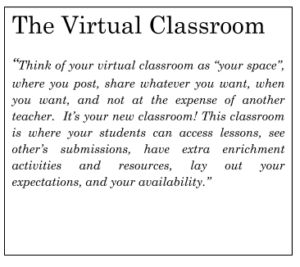 Some days, I know it is hard to look past all the crazy things happening in the real world, but never doubt that we can determine how well we continue to do what we have already done since the beginning of September, and that is: show up and do our best. As we continue to “tread” these new waters’, we aren’t expected to get it right the first time around. Remember, across the state everywhere there is an elementary art teacher who has to email their lessons to a classroom teacher and hope that they get a few submissions in their email. If you are blessed to have a digital platform that gives you your own space such as Google Classroom, Blackboard, or Schoology, you may not feel this on the same level. But a great solution to this is to create or “build” yourself a virtual classroom. Think of your virtual classroom as “your space”, where you post, share whatever you want, when you want, and not at the expense of another teacher. It’s your new classroom! This classroom is where your students can access lessons, see other’s submissions, have extra enrichment activities and resources, lay out your expectations, and your availability. A blog can seem like a big task but it can be free and relatively simple. There are blog builders that are extremely user friendly through Google Sites, Weebly, and I am sure the list goes on if you do a web search.
Some days, I know it is hard to look past all the crazy things happening in the real world, but never doubt that we can determine how well we continue to do what we have already done since the beginning of September, and that is: show up and do our best. As we continue to “tread” these new waters’, we aren’t expected to get it right the first time around. Remember, across the state everywhere there is an elementary art teacher who has to email their lessons to a classroom teacher and hope that they get a few submissions in their email. If you are blessed to have a digital platform that gives you your own space such as Google Classroom, Blackboard, or Schoology, you may not feel this on the same level. But a great solution to this is to create or “build” yourself a virtual classroom. Think of your virtual classroom as “your space”, where you post, share whatever you want, when you want, and not at the expense of another teacher. It’s your new classroom! This classroom is where your students can access lessons, see other’s submissions, have extra enrichment activities and resources, lay out your expectations, and your availability. A blog can seem like a big task but it can be free and relatively simple. There are blog builders that are extremely user friendly through Google Sites, Weebly, and I am sure the list goes on if you do a web search.
To date, I do not have every student submitting each lesson, but I still want to show up and try to reach or “hook” more students from week to week. Here are a few things to remember with long-distance communication: to be clear with your availability, a good rule of thumb to respond to your families is 12 to 24 hours during the regular business week. Communication should not just end there, take the time to respond and give feedback to your submissions. Follow up with students or families who have asked questions to ensure that your students’ and families’ questions have been resolved. I wish that I had time to respond to all of my students’ work during the school year with 500+. This is a task that usually doesn’t happen, but I have more time to give to my students now because I don’t have a ton of prep work to do. Because we cannot help troubleshoot with our students, as they work, and when things go wrong so it is important to note that our feedback is where our CONNECTION will grow.
There are many things that we all are missing right now and I personally miss displaying students’ artwork. It was a large part of my week. Art displayed throughout the building always enhances school community engagement. It not only cultivates a warm environment for our students but it advocates every faculty member, every community member, and every administrator who enters our halls. So to make up for this, I created a page in my virtual classroom that showcases student work. To increase the likelihood of others seeing this I will email a link to students and families, I even include my school community! Usually, my message is short and sweet, like; “check out these awesome submissions! Click the link to see!”
As we continue this journey and gear up for a new year in the fall, I hope that you take away some positives from your end of the year reflections. But most importantly I hope you are safe, healthy, and well!
Resources:
https://www.edutopia.org/article/show-must-go-online-arts-teachers-adapt-home-instruction
Equity, Diversity, and Inclusion- Is Art the pathway to a Cultural Utopia?
This amazing blog entry is from the PAEA ED&I chair person, Lynette Brown
Equity, Diversity, and Inclusion- Is Art the pathway to a Cultural Utopia?
(The blog consists of excerpts from my personal teacher reflections, inquiries, and presentations.)
“A cultural utopia meaning that every student has a voice in the classroom, school community, and we all (educators, too) can learn about the world by seeing, listening, and connecting to one another, (especially our students).”
As a black woman of color and art educator, every February during Black History Month, I often witness the parade of culturally conscious history and art projects throughout schools and various communities. However, for me, it is a time to reflect and delve deeper into my authentic purpose as a woman of color, artist, and art educator.
Reflections
In 2006, after spending ten years at one of the more challenging public schools in Germantown (Northwest Philadelphia) where school reform, No Child Left Behind, high stake testing and A.Y.P. (adequate yearly progress) were the only motivation for many, except students. My position as the art teacher, the last art teacher was cut as a result of the tumultuous test-driven environment. I was the last “advocate for the arts” and ambassador standing and gone were all of the art programs that once served over 1000 students. Never again at Pickett Middle School would the students paint Afro-centric murals on its walls, perform traditional African dance to the calls, sounds, and beats of distant African tribes, participate in the great theatrical performances like “Purlie” led by Mrs. Pollard and Mrs. Parkinson Hall, and the choir now silent had long sung its final gospel hymn. As the building decayed -so did the arts and its relevance as a new order of education took shape and rose in the city of Philadelphia.
I left a school that used only half of the building and a class filled with supplies and students who soared when being creative. I quickly recovered despite not knowing if the students I left behind did. I took up residency at Alternative Middle Years at James Martin (A.M.Y.) school. A.M.Y. is located in the Port Richmond section of Philadelphia and is quite a different neighborhood from Germantown, historically and culturally.
The opportunity to teach and connect with students from diverse cultures would be a new challenge and opportunity for me to grow and learn as a teacher. My excitement in the weeks leading up to September was un-containable. During my first months of teaching at A.M.Y., I enjoyed watching the social interaction of students and multicultural friendships. I can recall one late October afternoon during the occasional school social, a colleague shared the following statement, “I don’t care what happens out in the real world, I like that we have a perfect cultural utopia here at AMY.” That verbal exchange resonated with me and in me for quite a while. I now began to experience a new level of discontentment. Isn’t A.M.Y -the real world? What made A.M.Y. a cultural utopia? Where are the programs and messages that foster that cultural utopia? What did A.M.Y. have that was not present in the outside world-the real world? Does the school staff model this cultural utopia? Was my colleague seeing the whole picture? Am I missing the picture?
As time progressed the observed multicultural friendships were not enough. I questioned, looked deeper and found that the multicultural message of a perfect cultural utopia was somewhat superficial. The only “authentic” effort to learn about the world by seeing, listening, and connecting to others was being driven by the students in the halls, in the schoolyard before school, and during the lunch period. The diverse student population was only the beginning. Were we (the school staff) doing enough? Where was the share fair day at AMY, which started as a cultural exchange celebration? How could we offer our students a place and voice in the school community? Where was my place and role in regard to the students in this perfect cultural utopia? Can a cultural utopia ever exist?
In the past, I believe that designing lessons that featured the backgrounds or highlighted the history of students represented in my classroom was enough to promote student voice in the classroom. It was my way of promoting equity in the classroom to others from different cultures or ethnic backgrounds. However, through my reflection, I learned that I was presenting student identity from my perspective; it was more of my teacher voice and intent. In response to the on-sought and parade of questions, I began to include more even more culturally relevant classes on my roster and provided students with collaborative projects featuring art from many cultures and lands from a first-person perspective. I once again, as I re-framed my practice to help create a sense of “a cultural utopia”; I embarked on a journey of inquiry using visual journal projects. As I tried new things to teach authentically and created more space for students in the classroom, I began to learn the importance of student voice and it’s affect in the classroom and learning.
My Inquiry Questions
“What occurs when visual journals are used as social commentary for expressing student identity within the school?”
- Can the journaling process create a space for student culture and voice inside the classroom?
- How can I promote more authenticity and originality in student response in their journaling?
- Can exploring identity issues through art journals in the classroom lead to increased student engagement and self- esteem?
- Will the inquiry in my class elicit the type of expression needed for me to learn about who my students really are?
- What is my role in fostering a safe environment to create personal art and expression?
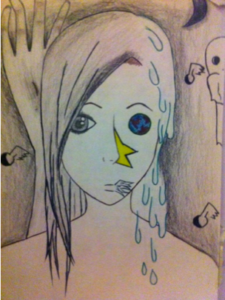
As Mark Berger states in the Culture of Quality chapter in Going Public… “…Elements that have nothing to do with curriculum have the most profound effect on the lives of children… These things are every bit as important as the curriculum.” How can we allow our students voices of identity into the school and class dialogue?
Visual Journal Project Overview
Sampling of Visual Journal Lessons:
- I Am, I Am Not T-shirts
- The Power of Words Illustrations
- Self Portrait with I Am Poem
Through the visual journal project, my students addressed themes such as bullying, prejudices, gender roles in their family, in their culture and the United States, along with the other concerns and issues that adolescents face from other parts of the world. The students discussed their journal projects (visual drawings, interviews, photographs, poetry, narrative writing, research information, etc.) and displayed the art in a final project exhibition for the school-wide community to view.
The purpose of journaling is to record, reflect, or envision, problem-solve, and purge. For years, I have used journals to transition, settle students down, begin a lesson, assess student learning and development, offer an opportunity for students to make mistakes, provide reflection, and deep thought. As years passed, journaling evolved into a larger role in my instruction, teaching, and student learning. I have unexpectedly learned so much about my students’ outside life and thoughts through journals. Often, through student journals that I have had a glimpse into my students’ true identities.
My Conclusions
Students serve as the best authorities on telling their stories. So often, others speak to and for students and make assumptions on what the students’ realities and communities are like to the larger world. As an educator, I learn best from my students firsthand. A cultural utopia meaning that every student has a voice in the classroom, school community, and we all (educators too) can learn about the world by seeing, listening, and connecting to one another, (especially our students). In this cultural utopia, there is respect for learning about the world and one another’s world through inquiry. Seeing our students’ cultural capital allows for valuable learning experiences in the art room and work towards promoting inclusion. This is a way of understanding our students come to our art classrooms with a plethora of valid and valuable experiences, traditions, and knowledge. As every September and February approaches, I once again have recaptured that un-containable excitement knowing that a culturally relevant classroom driven by my diverse student population can move A.M.Y. closer to a cultural utopia.
By Lynette Doreen Brown
Art Teacher, Philadelphia School District
M.ED, N.B.C.T.,
Equity, P.A.E.A. Diversity, and Inclusion Committee, Chairperson
Conference Key Note Sneak Peek
Have you signed up for the PAEA conference in Harrisburg yet?? It’s coming up!! 3 weeks away…October 5-7! I personally can’t wait!
Do you know about one of the Key Note speakers, Wynne Kinder?? Read below to find out more!!
WYNNE KINDER, M. Ed. Wynne’s teaching career spans 28 years in private and public schools, most recently including 13 years bringing mindfulness into regular, special (autistic & emotional support) and alternative education (including incarceration) settings. As owner of Kinder Associates LLC and trainer for Wellness Works in Schools™ (preK-12 classrooms & teacher training), she creates curriculum, programming, online trainings and teaching tools that address: mindful awareness, diverse learning needs, trauma in the classroom, healthy connection, social emotional skills, engagement & participation, and behavior guidance. Her work is informed by training with: the Mindfulness-based Mind Fitness Institute, the Trauma Center – Justice Resource Institute and UMass Mindfulness-based Stress Reduction. Wynne is the author and content creator of: Peace Work – mindful lessons for the early years,Mindful Moods – a mindful, SEL curriculum for grades 3-5, Mindful Choices – a mindful, SEL curriculum for grades 6-8, a chapter on special education in Teaching Mindfulness Skills to Kids and Teens (2015), GoNoodle.com’s digital brain breaks (mindful SEL themes in FLOW, Think About It, Maximo, BLAZER Fresh) & Audio practices for MindfullyADD.com. She has practiced mindfulness for more than 15 years and received training in Mindful Yoga, Mindfulness-Based Stress Reduction, Trauma Sensitive Approaches through the Justice Resource Institute (MA), Boys Town – Teaching Social Skills to Youth; CASEL, Mindfulness-based Mind Fitness Institute (VA), Yoga Ed teacher training, and Social Action Teacher Training – Lineage Project (NYC). Wynne holds a PA Teaching Certificate (K-6) and earned a bachelor’s degree in elementary education from Alma College (MI). www.wynnekinder.com
Rule Breakers and Makers: Women Artists at Work
Guest Post by Tyler Adjunct Professor Carol Royer, promoting an amazing professional development opportunity in collaboration with the Philadelphia Museum of Art!
In the second report published by The Freelands Foundation, evidence showed women artists continue to be under-represented in the art world. Women’s voices have been integral to the institution of art, but despite their continued engagement, many have faced challenges in showing, selling, and gaining recognition for their work.
For the first time, Tyler School of Art and the Philadelphia 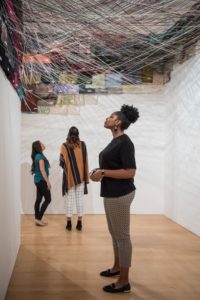 Museum of Art are collaborating to focus on the significant contributions of women in the visual arts. This unique summer course, “Women Artists at Work: Rule Breakers and Makers”, will utilize themes to explore art made by women and use this work as a jumping off point for the studio. Take inspiration from the work of modern and contemporary women artists in this week-long, pilot collaboration between the Philadelphia Museum of Art and Tyler School of Art. Students will engage directly with works by artists including Georgia O’Keefe, Jean Shin, and Ursula von Rydingsvard in the Art Museum galleries, as well as the Fabric Workshop and Museum.
Museum of Art are collaborating to focus on the significant contributions of women in the visual arts. This unique summer course, “Women Artists at Work: Rule Breakers and Makers”, will utilize themes to explore art made by women and use this work as a jumping off point for the studio. Take inspiration from the work of modern and contemporary women artists in this week-long, pilot collaboration between the Philadelphia Museum of Art and Tyler School of Art. Students will engage directly with works by artists including Georgia O’Keefe, Jean Shin, and Ursula von Rydingsvard in the Art Museum galleries, as well as the Fabric Workshop and Museum.
Structured looking, responding, and connecting led by Art Museum educators builds a foundation for intensive studio practice exploring a variety of materials and media. Three days of focused studio time at Tyler exploring a variety of materials and media will allow course participants to engage their interests and better understand their own voice as a maker.
GOALS
- Learn more about a select group of modern and contemporary women artists in the museum galleries
- Develop new work inspired by modern and contemporary women artists
- Consider our art making practice through a conceptual and theme based process
- Challenge our biases, question our assumptions, and expand our repertoire and understanding of what art can be
- Create new work in a focused studio setting alongside other artists
- Collaborate through learning and teaching in a small group
- Participate in art-making workshops
- Become reflective practitioners through direct experience, discussion, writing, and art-making
Organization in the Art Room
The following query was posted to our PAEA Facebook Page. Members chimed in, and their responses are below for your benefit and organizational enjoyment! I’m getting goose pimples already thinking about the wonderful ways to organize!!!!
“Please share some of your unique and successful classroom organizational devices/structures. How do you store 2-D work? How do you store 3-D work? What do you feel is necessary to always have on the table? What are your art room life hacks? Etc…”
Marita Fitzpatrick of Bodine High School in Philadelphia suggests: “For small 3d (our recent stuffed toys): I have a copy paper box for each class. The students put their work in manila envelopes, write their names on them and I have one person from each table collect the envelopes and return them to the box. For 2d, each table puts their work in folders marked w the table color (tables are color-coded) and that goes in the copy paper box. This box is marked, period 1, period 2, etc. I have a closet of shelves for ceramics and each kid gets a shoe box to store their stuff in. It keeps the others from touching the work and breaking it. Students wrap their work in dry cleaning plastic to keep it moist. I regularly have kids empty the drying rack, sort the work and put it in the copy paper boxes. I keep nothing on the tables, because the stuff disappears and they put trash in the containers. I store markers and colored pencils in plastic pencil boxes on open shelves in the room and number them. I never look at the numbers or count them, but the kids think I do, so nothing disappears. On those shelves, I also have scissors and other frequently used supplies that students have open access to.”
Alison Elizabeth of Lancaster, PA shares her planning strategy: “Each class I teach is a different colored sticky note. This calendar is glued into the front of my sketchbook (which I use for all of my demos, meeting notes, and conference notes). It’s all with me and ready to go at all times.”
Linda Keels suggests making the investment in folding tables from the local hardware store (she uses 3) for about $30-40 a piece—there is room to hold up to 6 classes worth of work (she teaches 12) which forces her to keep it moving and the kids to stay on track for 3-D things.
Eleanor A-Evans For stores 3D work, such as clay sculptures and paper mache on ‘mobile pan racks’ (like the one in the photo- thanking Google image search). Depending on your supplies resources, the cost on the average is under $90, and can be the solution for saving space and stowing away the masterpieces!
Julie Schedin share with us how her students creatively tackle this issue with a little design thinking! “My Crafts class yarn bombs a coat hanger. They own the airspace above their seat, and hang all work (basket weavings, etc) from the coat hanger in the drop ceiling. The room develops a type of “rainforest canopy” but a least we can keep 3d projects organized and handy.”
Judi Treffinger of Carlisle, and formerly the Carlisle Area School districts has an idea for yarn storage! “You know all those large gallon sized plastic food containers your cafeteria gets when they purchase food? I duct tape then together with the open sides up and use them to store and separate skeins of yarn. They can sit on a counter top, or stash neatly in a cupboard with open ends facing out- all colors are visible and yarn doesn’t get tangled!”
Moore College of Art and Design Alumni, Autumn Rae suggests art teachers to follow her Instagram: mrsdow_artroom where shes posts things about classroom display and specific grade levels k-5 . She posts lots of classroom things about organization what materials I use.
Autumn also shares:
“- Container store bins are the best!
– It needs to be organized and colorful for me to function. I cannot stand messes or piles.
– I keep messes at the middle table whenever possible.
– I use my drying rack when I can but I actually love rolling out a sheet of paper and either working on the floor with the kiddos or having them dry their work flat and organized on a sheet of paper. Work great for printmaking each student gets a row for all their prints.
– All my notes are on my Instagram that describe each photo and what it relates to classroom, display, or a grade level.”
Autumn teaches art to 881 students k-5 students. She describes, “We are an emotional support school with a high ESL population and also a title 1 school. I have put lots of my own money into my class but once the upfront cost is paid off then I have all these organizational systems in place for years to come. I need everything organized like I said but also kid friendly. I have created two closets for classroom teachers and stock it at the beginning of the year so they don’t ask me for supplies I need for my own classes.”
Woah Autumn! Thanks for all of that!!! Loooooove the colors!!! And there is no denying where those pencils came from!!
Daisy Konowal uses a system of table color folders. 2 sets- one for work in progress and one completed work. Also, Daisy uses sheets/fabric/blankets to cover her shelves to limit access to shelves.
Sunnylee Mowery of Philadelphia’s Greenfield Public School strives to make my classroom organization methods so easy a kid can do it! Each table is color coded and this helpful chart rotates at the start of each week so everyone knows who is in charge of what. The artists are expected to pass out work and supplies, monitor volume, tidy table bins and floors, and even call each other to line at the end of class.
Sunnylee has clearly labeled bins with teacher name are organized by grade level. All supplies that accompany the project are placed above in their grade section.
Sunny poses the question, “How do students monitor sound, you ask? The volume giro migrates to the table in charge of volume each week. If the room gets too noisy, the students “ring” the giro to signal to the class to quiet down. If we get 3 giro rings, we lose the privilege to talk.”Click Here for a link to the video of the magical giro sounds that have the power to quiet students!
Kim Horan Colasante, art teacher in the School District of Philadelphia shares, “My routine is very much the same as Sunny’s. Each table has a color, table folders or student folders are matched to the table they sit at. I have a job chart, students give out folders, supplies, paint patrol, and floor sweepers. Jobs rotate weekly according to table colors. Supplies are located in front of the room and Barney’s Cleanup song plays at the end of every class 10 minutes to go. The students know to stop, put their work away and do their jobs. The ones that are done sing to barney. (I teach middle school) they dab to it also. It only plays for a minute so work must be away by the time song is done. then folders are collected and floors swept etc. 3D work is done a bit differently due to lack of space in classroom. When Barney plays each table brings me their 3d work and I place it in a special section so that they may retrieve it the following day. Clay is kept in large Rubbermaid containers until in it ready for drying.”
What do you do in your classroom?????
Felting a Sneak Peek…
Hi everyone! There have been quite a few posts highlighting some awesome sessions coming up during the conference. It’s really going to be hard to choose!
We’re still hoping for more people to send us their session descriptions and photos so we can highlight them (there’s still time!), but until then, I thought I’d show off some of my students’ work. And hopefully entice you to come to my FREE session (ticket required, though, so get one!) called “The Future of Felting” on FRIDAY, 2-2:50 PM, in Wilson 434.
I’ll show you some felting techniques that I have used with my students, and ideas you can use to “felt” it into your curriculum (some felting humor for ya). Using this form of fibers is an easy way to create sculptures and 3D art in the classroom. 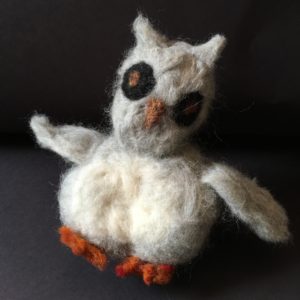 This will be hands on, so bring your ideas and we’ll jump in! Hope to see you there!
This will be hands on, so bring your ideas and we’ll jump in! Hope to see you there!

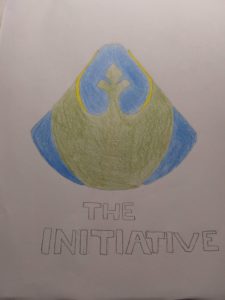
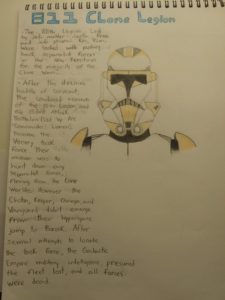
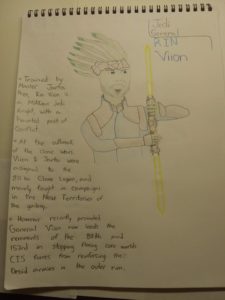

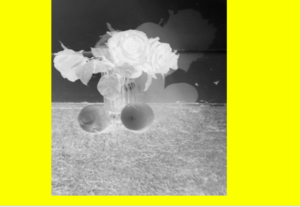
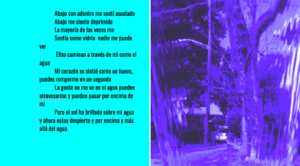
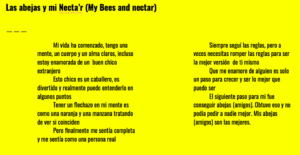
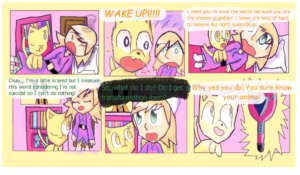
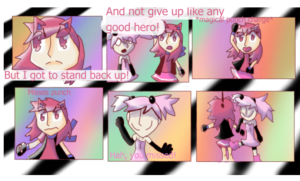
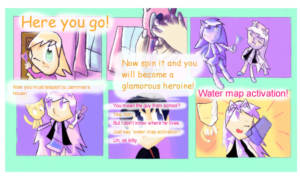

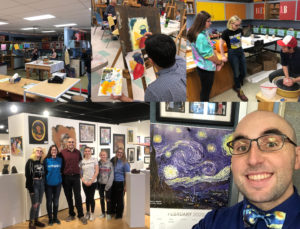
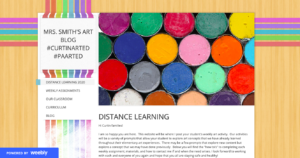
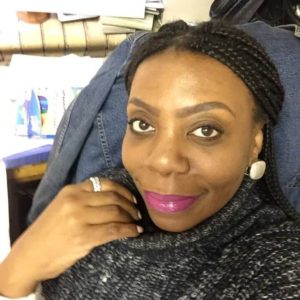
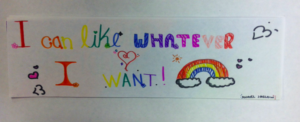

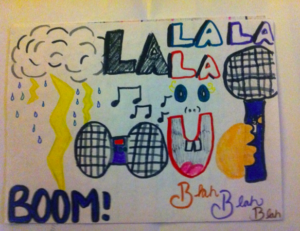
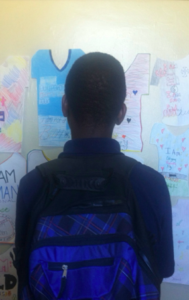 .
. 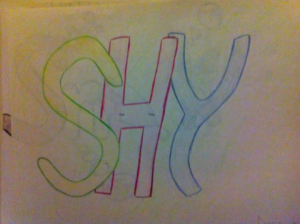
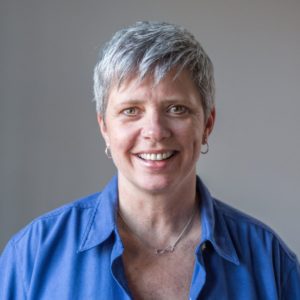
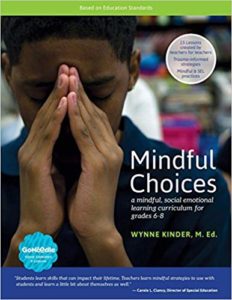
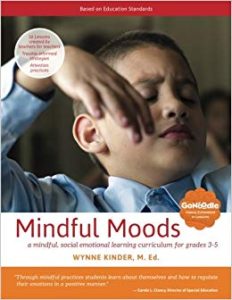
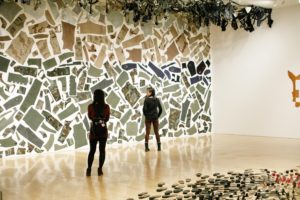
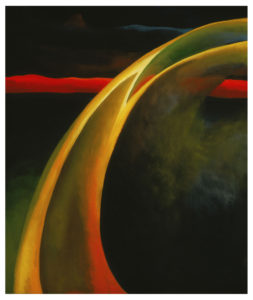
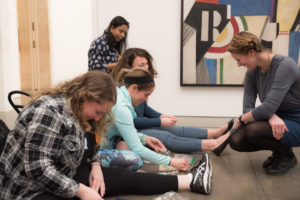
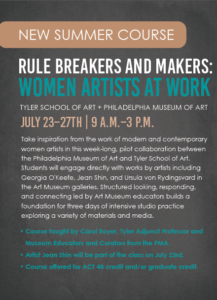
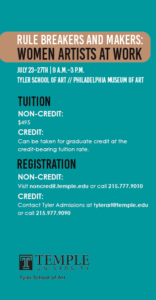
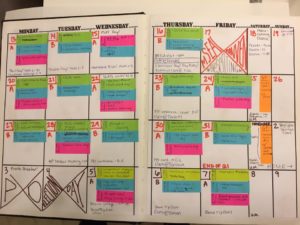
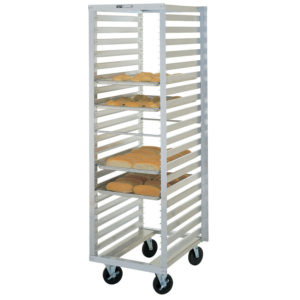
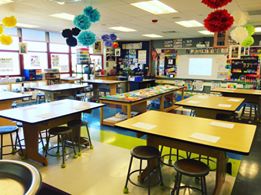

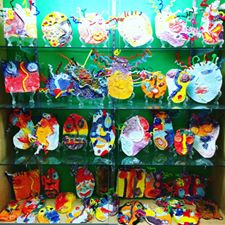
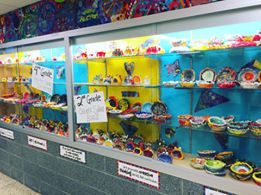
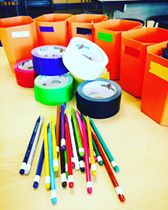
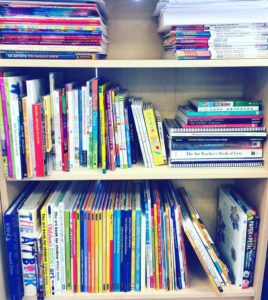

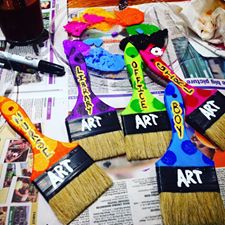
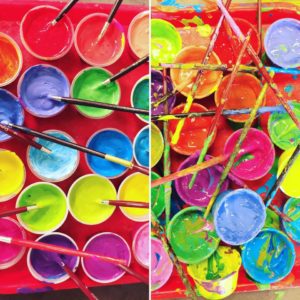
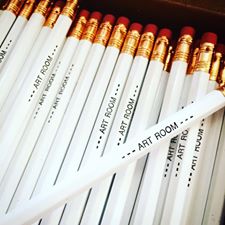
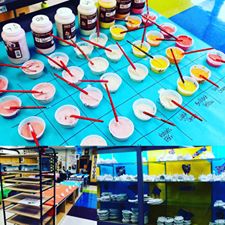
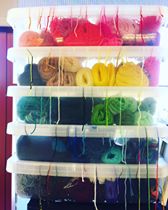
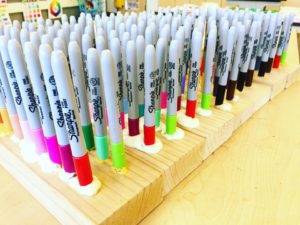
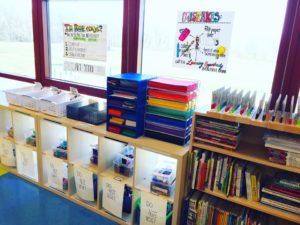
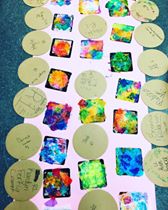

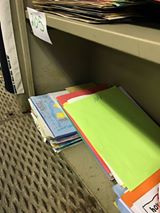
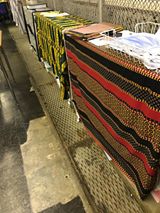
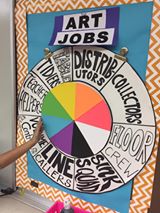
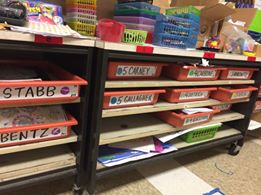
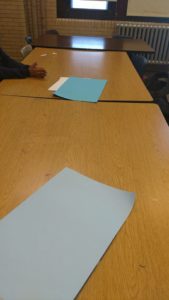
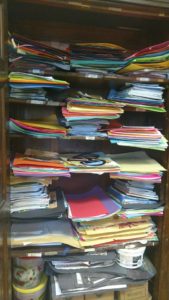
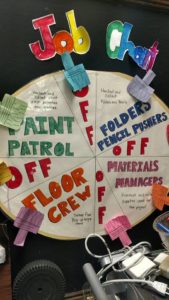
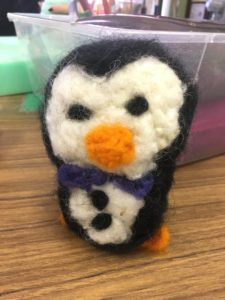

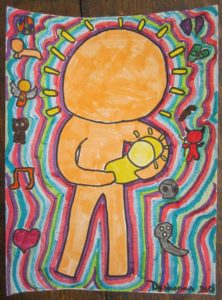
 D5 Creation
D5 Creation